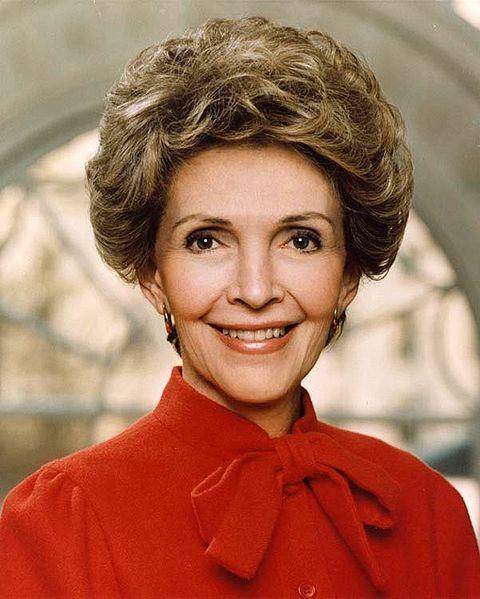Nancy Reagan: Style With Substance
By • March 16, 2016 0 1368

On Sunday, amid the cacophony of the latest heated pronouncements from the people who would be president, many of them invoking the name of conservative icon Ronald Reagan, and even as a movie company had been re-enacting the 1963 funeral of President John F. Kennedy for the film, “Jackie,” starring actress Natalie Portman as the first lady who seemed to embody glamour and class, word came that former first lady Nancy Reagan, who was also known as a high fashion-conscious icon, had died at the age of 94 in California of heart congestion.
The news, the day, the time, brought on conflicting and intense feelings and memories, including thoughts of another presidential funeral not so long ago, when the life of Nancy Reagan’s husband, the hugely popular Republican president Ronald Reagan was celebrated at his state funeral at the National Cathedral in 2004. The iconography and the memories, 40 years apart, ran parallel — De Gaulle, the brothers Kennedy, John John saluting the coffin, the widow Jackie in 1963, former presidents remembering, and later the son of Reagan’s vice president and a president himself, the British Prime Minister Tony Blair and the former prime minister Margaret Thatcher and former Soviet leader Mikhail Gorbachev sitting along. In California, where the president was laid to rest, Nancy Reagan laid her head on the coffin and kissed him goodbye.
Presidents and their extended as well as actual families are never far from our minds, especially during an election year in which we choose our next president. So news of the passing of Nancy Reagan immediately invoked a host of memories and feelings, especially if you’ve lived in Washington, D.C., for any length of time. What we know mixed with what we remember —inauguration day, the Reagans waving to the crowds, jets overhead, the news, triumphant and hopeful and that the Iranian hostages had been released this day. Yes, Nancy was wearing red.
The more time passes, among presidents and their loved ones, the more the image and the life changes, and you realize that there are not only second acts in American life, but third, and fourth acts, especially, it would seem, among actors. Ronald Reagan was not only the first actor to become president, but Nancy was also the first actress to become first lady, and those jobs became roles they played out daily in public. He was the jovial, magnetic, charismatic, eternally optimistic and sunny conservative. She was the adoring wife, the fashion plate, the small, thin queen, a very protective and often controversial first lady. The two had risen from being second-tier actors to the state house in California and on to the U.S. presidency.
The thing that people seem to remember most was how tightly and intensely held a marriage the Reagans had, the kind that few couples achieve. But Nancy herself did have style — sometimes bordering on the ostentatious in times that were often difficult for lesser beings — and she brought dazzle and light to a time that her husband had decreed to be “morning in America.”
They lived in a drama: the assassination attempt, the overture to the Soviet Union, White House controversies, “Just say, ‘No,’ ” the AIDs epidemic, Iran-Contra and so on.
Maybe the bravest things she did came after. It was when she showed the depth of her devotion, care for Reagan in his fading and twilight years as he moved through the stages of Alzheimer’s which finally robbed him of the memories of his own large life and their life together. In so doing, she battled the GOP on stem cell research, which might help in the fight against Alzheimer’s, and was always near or at the side of the man with whom she spent more than 50 years of married life.
In the end, she was alone, diminished physically, but grown to a size that matters in the imagination, in history, in our collective memory.

